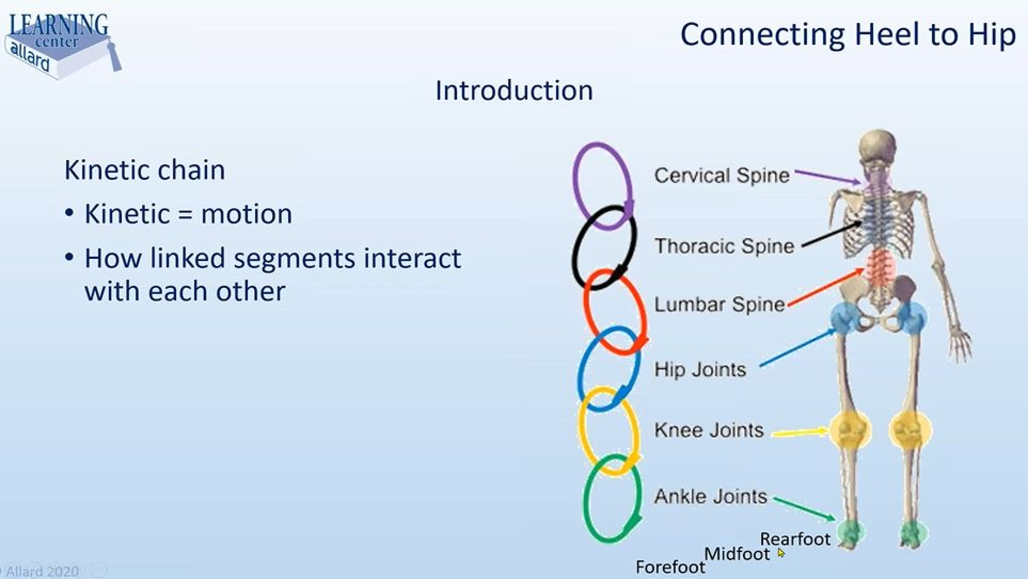Functional Biomechanics Improve Heel to Hip Linkage to Restore Gait

One of the primary goals in managing most gait deficit patients is to stabilize the pelvis during gait. If the pelvis isn't stable, nothing else can be stable so the metabolic cost of gait increases and the safety during gait decreases. Orthotic interventions can have a significant effect on the motions available to joints in the locomotor system. Controlling too much motion can immobilize motion and limit the efficiency and stability of gait. Not controlling enough motion can allow destructive motions that lead to further disruptions during gait. With very few exceptions, normal anatomical and biomechanical motion at the foot/ankle complex is required for the patient to achieve pelvic stability during gait.
Click here to begin the course.
If you cannot access this online test or have any questions regarding it, please contact us at education@allardusa.com or 888-678-6548. Paper or electronic versions can be sent upon request.
Please also review the following documents:
Allard AFO Professional Instructions
Product Selection Guide
